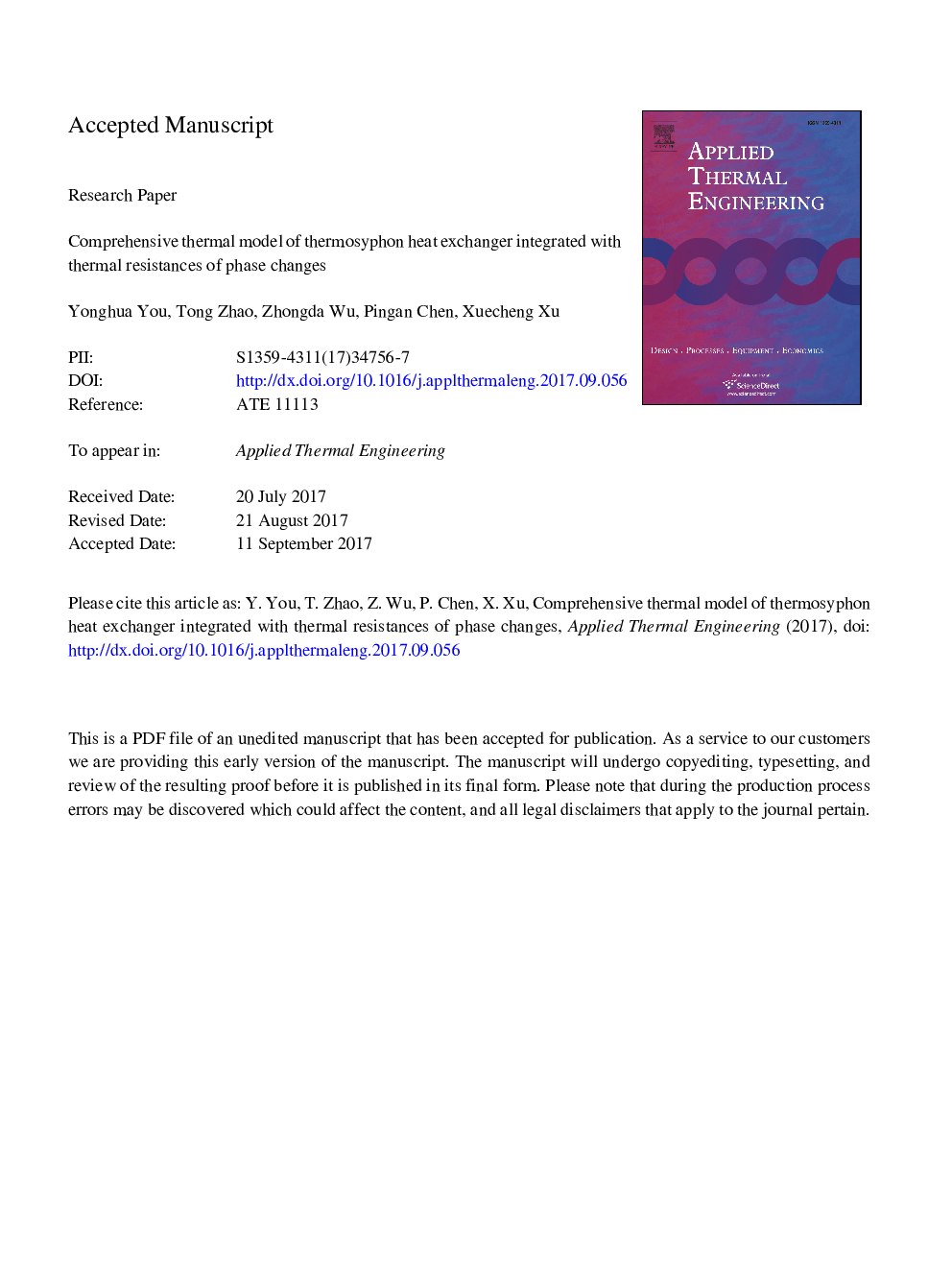| Article ID | Journal | Published Year | Pages | File Type |
|---|---|---|---|---|
| 7046590 | Applied Thermal Engineering | 2018 | 29 Pages |
Abstract
Thermosyphon heat exchangers were widely applied to recover exhaust heat, and the effectiveness-NTU method was proposed for their thermal performances. As the thermal resistances inside thermosyphon were neglected in that approach, the predicted effectiveness was overestimated and the outlet temperature of hot fluid underestimated compared with experimental data. In the present work, the comprehensive mathematic model, with the thermal resistances of vaporization and condensation inside thermosyphon taken into consideration, is proposed to accurately predict the thermal performance of thermosyphon heat exchanger. The numerical solution scheme is presented and the thermosyphon heat exchanger released in the literature is computed for the validation. With current model, the typical profiles of fluid temperatures are predicted. In addition, the fin spacings of evaporator and condenser are decreased to improve the thermal performances of concurrent and countercurrent thermosyphon heat exchangers. As the vapor temperature inside thermosyphon is coupled with working pressure and thus significant in optimal design, its profile and variation are systematically studied. The present work demonstrates that the current comprehensive model could predict the thermal performance of thermosyphon heat exchanger with a good accuracy, and the effects of heat transfer enhancement on the effectiveness and vapor temperature are both obtained.
Related Topics
Physical Sciences and Engineering
Chemical Engineering
Fluid Flow and Transfer Processes
Authors
Yonghua You, Tong Zhao, Zhongda Wu, Pingan Chen, Xuecheng Xu,
